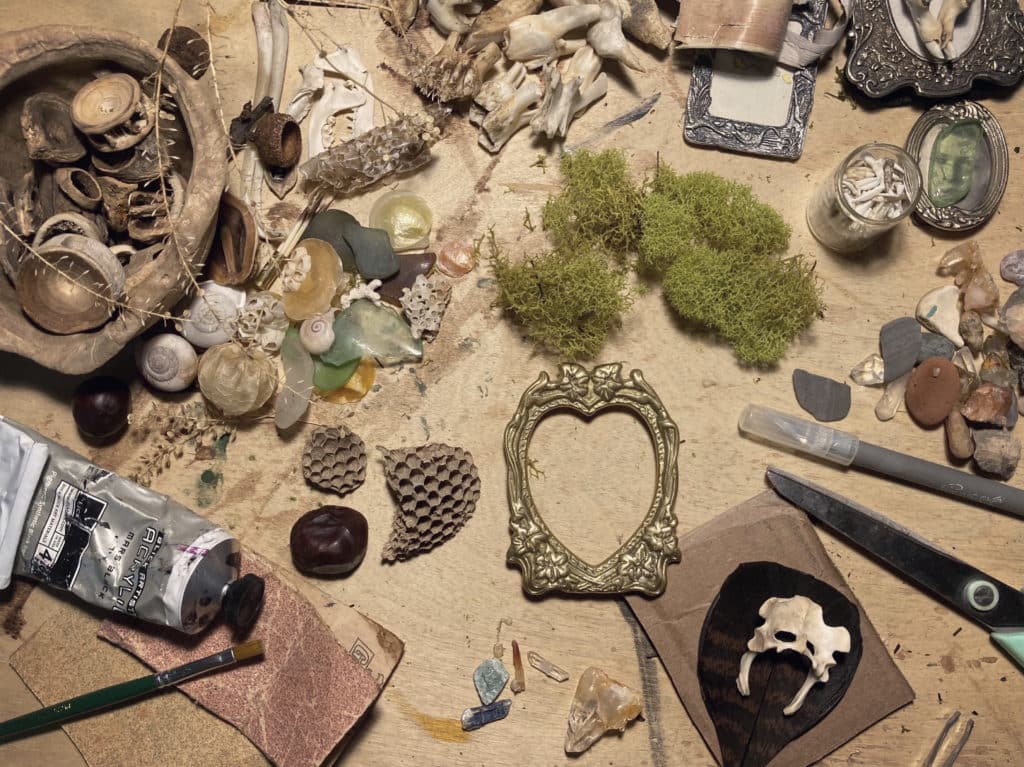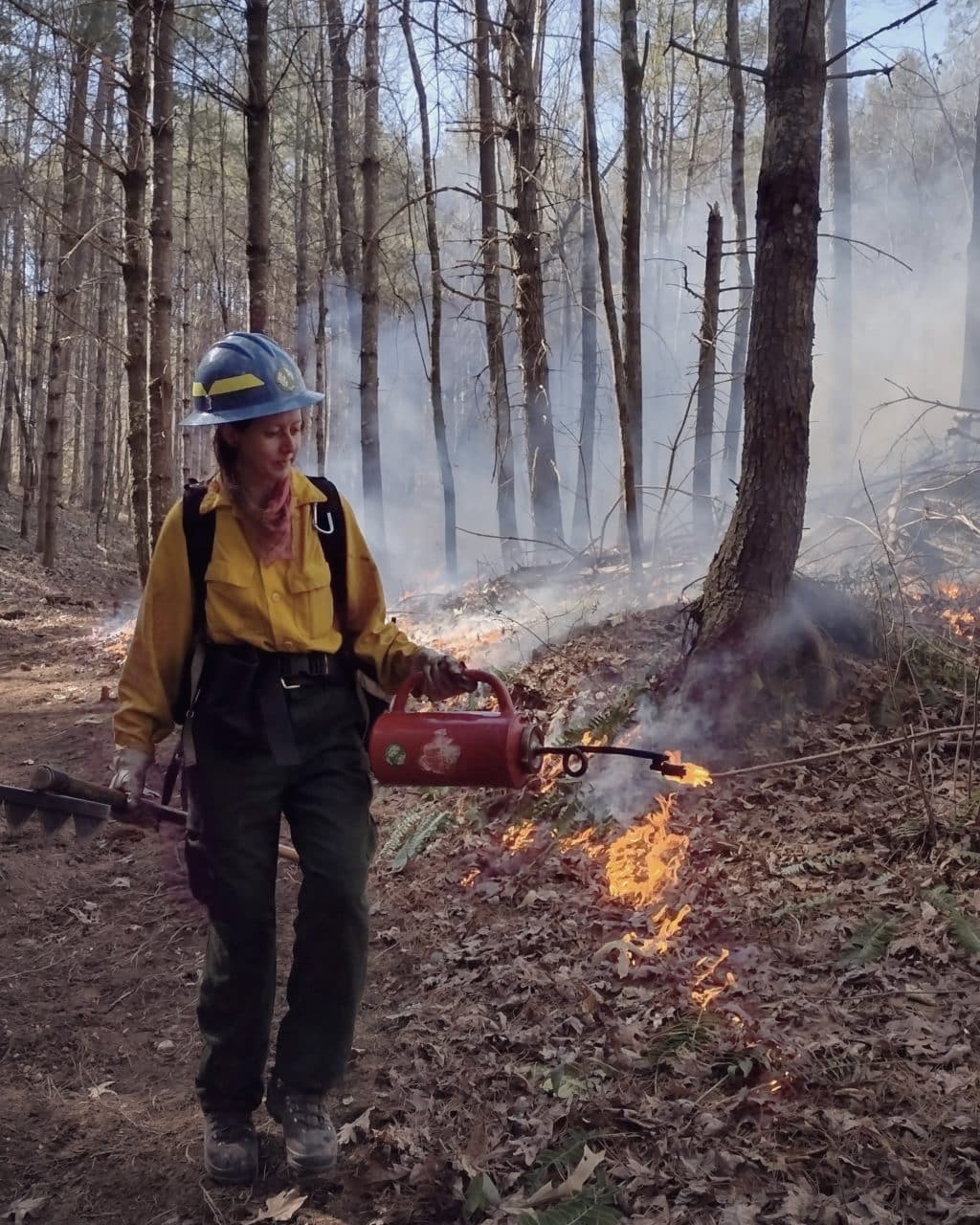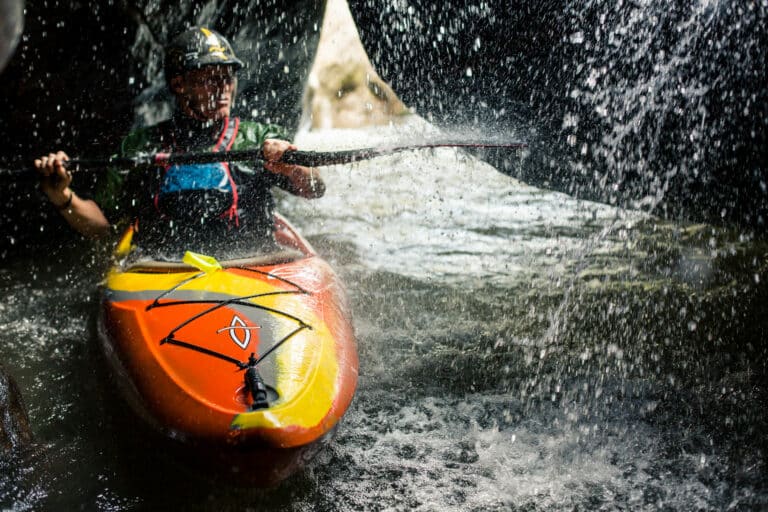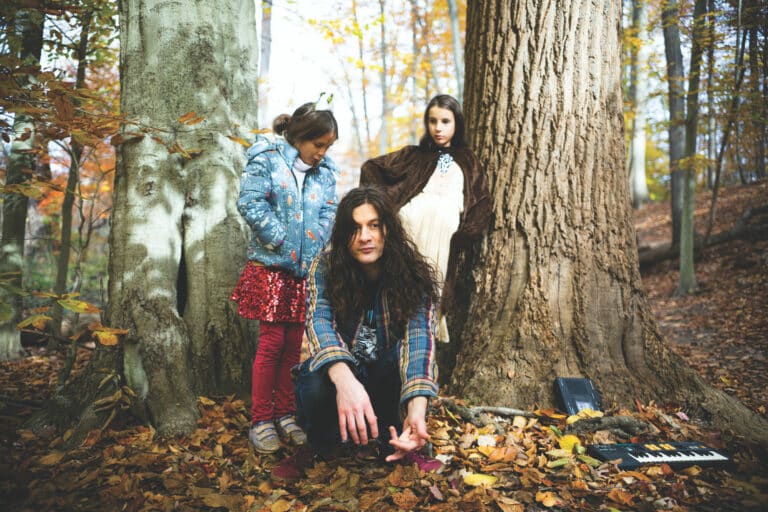
Photos courtesy of Smucker
Found objects inspire artist Lauren Smucker
SOMETHING SEEMS TO BE CRAWLING across the sculpture, making its way towards the center. Upon second glance, it’s clear that it’s an empty cicada shell balanced on top of moss, perfectly at home surrounded by succulents and bones. The longer one looks at the work, the more it becomes apparent that each piece has been carefully positioned.
Inspired by the flora and fauna of the Appalachian Mountains, Lauren Smucker describes this style of sculpture as “rearranging dead shit.” Taking things that already exist and positioning them in a new way, she’s trying to create a small piece of nature that people can bring into their home. “I’m not trying to compete with or recreate something that’s already there,” Smucker said.
By day, Smucker is a wildland firefighter and prescribed burn crew member. She also leads a variety of hiking and backpacking trips for Blue Ridge Hiking Company. When she’s not working, you can find her out on the trails of Pisgah National Forest. Just 20 minutes from her home in western North Carolina, the cozy, lush trails sprawling out before her are filled with wildflowers, snails, waterfalls, and tree canopies ripe with inspiration for her next project or two. “Being immersed in the forest every day is such a treat,” Smucker said.
Rather than pushing herself to constantly create, Smucker takes a more organic approach to her art. “Sometimes I feel really inspired to make things, and sometimes I get really busy and things get put on hold for a while,” she said. “I don’t know if I have figured out my personal role in the art world, other than to evoke some kind of response or feeling.”
The Art of Collecting

Building and constructing have always felt the most natural for Smucker as she works in a variety of mediums with a wide range of materials. Whether it’s carving wood block stamps or collaging photos, each piece is an exploration of the natural world. Some pieces are meant to be worn as a necklace or ring, while others are for display. Even if the result is a two-dimensional piece, Smucker said the process of creating that piece feels very three-dimensional as she carves, shapes, and glues together each element.
Smucker most commonly works by arranging found objects, a practice that started when she studied sculpture in college. “I didn’t have a lot of money for materials,” Smucker said. “I just started going for walks and collecting things that I would find along the road or abandoned train tracks.” Across her pieces, you’ll find all kinds of items she has picked up, including wasp nests, pinecones, shells, nuts, and stones.
Due to rules and regulations of public lands, Smucker collects all of her items from the side of the road or private property. Certain antlers, feathers, and nests are protected under federal and state law, so Smucker has to be careful about what she collects. She never collects any living plants or animals and does not forage for wild moss.
Once she has her materials, Smucker considers how color and texture combinations will fit together in the composition, making sure to include pieces that can be found in the same environment. “I’m not going to put ocean shells with seed pods that I would find in Tennessee,” she said. It’s this attention to detail, from the tiniest of accents to the centerpiece item, that makes her work so compelling.
Each element in one of Smucker’s creations has a story about how it made its way into her hands. Whether purchased at a flea market, yard sale, or thrift store or gifted by a friend, she considers that story during the arrangement process. If there are animal bones, she likes to daydream about the life that creature once led. “You’re the woman who likes weird stuff so [friends and family] start to bring you weird stuff,” she said. “My nephews are really good at collecting cicada shells for me.”

Smucker’s fascination with cicadas—found in many of her pieces—began at an early age. Growing up in Pennsylvania, she witnessed firsthand the cicada’s cyclical return as a brood emerged from their underground burrows to sing their distinctive tune for just a few short weeks in the summer. Although every year is different, some broods see thousands of cicadas filling the air and covering the sidewalks. As they complete their final molt, they leave their husks behind in the trees, only to die six weeks later.
Smucker remembers painting those leftover husks with her aunts and sticking them to each other’s clothing as the carcasses piled up around them. Now they act as a calling card for her work. “I find that it’s a good way to put my signature on a three-dimensional piece because I can’t really sign my name on it,” Smucker said. “So I just pop a little cicada shell on there like, oh, I’ve been here.”
You can find more of Smucker’s work online at LaurenSmucker.com or on Instagram @smuckstudio.








